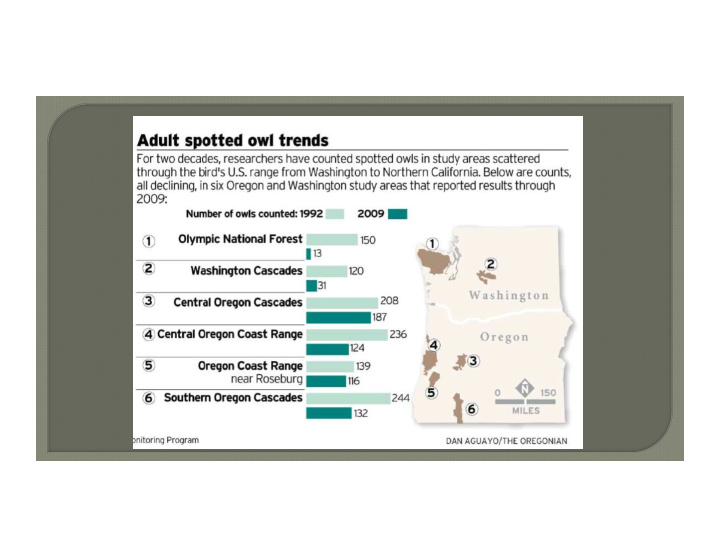



“ Recovery Ac*on 29 : Design and implement large-scale control [removal] experiments to assess the effects of barred owl removal on spo=ed owl site occupancy, reproducAon, and survival.”
• Friends of Animals sued to stop the U.S. Fish and Wildlife Service from killing barred owls as an experiment to protect spotted owls. • The U.S. Migratory Bird Treaty Act for the protection of migratory birds, requires compliance with four international treaties -one each with Canada, Mexico, Japan, and Russia. • Of the four treaties, owls are protected only under the treaty with - Mexico. • Friends of Animals argued that barred owls can be killed under the treaty only “when used for scientific purposes, for propagation or for museums.” Id., art. II(A) and that the experiment is benefitting the spotted owl, not the barred owls that will be shot. • The court ruled against the Friends and held that “use for scientific purposes” could mean “to employ” the bird, or “to carry out” a scientific purpose “by means of” the bird, or “to derive service” from the bird for a scientific purpose. Removing a bird to procure its demise likely fits within the letter of those definitions, even if the bird (or its cadaver) is not itself the subject of scientific experiment.
Predation - Ravens and Sage Grouse
7 U.S.C. § 8351 (formerly § 426). Predatory and other wild animals The Secretary of Agriculture may conduct a program of wildlife services with respect to injurious animal species and take any action the Secretary considers necessary in conducting the program. The Secretary shall administer the program in a manner consistent with all of the wildlife services authorities in effect on the day before October 28, 2000.
4. Here, Wildlife Services again violated NEPA by failing to examine any site specific impacts of its anticipated activities, and failing to establish that ravens and other predators are depressing or otherwise injuring populations of sage-grouse and other desired game species. 5. Wildlife Services’ attempt to expand its Idaho program to kill sage-grouse predators and other wildlife to “benefit” native species is also unlawful because it exceeds the agency’s statutory authority under the Animal Damage Control Act, which only allows Wildlife Services to take actions deemed “necessary” to control “injurious animal species.” 7 U.S.C. § 426. The 2016 Idaho EA and DN/FONSI fail to establish that the target species are “injurious,” and hence Wildlife Services lacks statutory authority to undertake its proposed new wildlife killing.
THE END
The most immediate threat to the existence of the Northern spotted owl doesn’t carry an axe. It doesn’t wear plaid, work in a sawmill, or drive a pickup truck featuring a faded yellow bumper sticker reading “Save a logger—kill an owl.” Instead, 25 years removed from the Timber Wars of the early ’90s, which anecdotally pitted hemp-wearing environmentalists against grizzled loggers, the spotted owl is challenged by a foe hardly distinguishable from itself. That’s because it’s another owl. Specifically, the barred owl, an invasive species that has moved into Pacific Northwest forests and wrought havoc on their native cousins. “If we don’t do something about the barred owl, we’re going to lose the Northern subspecies of the spotted owl,” U.S. Fish and Wildlife Service’s Robin Bown says. “I wouldn’t have told you that 10 years ago.”
Recommend
More recommend